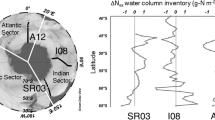Abstract
Captured CO2 could be deliberately injected into the ocean at great depth, where most of it would remain isolated from the atmosphere for centuries. CO2 can be transported via pipeline or ship for release in the ocean or on the sea floor. In Taiwan, CO2 release is preliminarily projected from 2010 to 2030 in an average amount of 6.957 Gt within this duration. If deep sea sequestration for CO2 can be the possible option in Taiwan, it seems to exists possible potential area delimited between 122.0°E to 122.5°E and 21.8°N to 22.3°N for CO2 sequestration on account of its isolated and flat topography. Apparently, the area to the southeast of Taiwan is found to reach a depth deeper than −3,000 m and can be taken as a testing area for pilot studies. This study searches the area using the contours from the depth of −4,554 to −5,500 m with 1-m interval; the area, topographic volume, maximum mean height (volume/area), and ocean volume are reported. If the emission rate is kept constantly, for 20-year storage it needs 3 m of thickness reaching the sea ridge at the depth −4,554 m using top-down style; for 100 years of storage it needs 12 m. On the other hand, if it accounts for the bottom the sea floor is taken as the reference and the accumulated CO2 is stored from the depth at −4,900 m using bottom-up style, it requires about 37 m for the 20-year storage and 61 m for one decade.




Similar content being viewed by others
References
Alendal G, Drange H (2001) Two-phase, near field modeling of purposefully released CO2 in the ocean. J Geophys Res-Oceans 106(C1):1085–1096
APERC (2006) APEC energy demand and supply outlook 2006, projections to 2030 economy review. Asia Pacific Energy Research Centre, Institute of Energy Economics, Japan
Auerbach DI, Caulfield JA, Adams EE, Herzog HJ (1997) Impacts of ocean CO2 disposal on marine life: I. A toxicological assessment integrating constant-concentration laboratory assay data with variable-concentration field exposure. Environ Model Assess 2:333–343
Aya I, Kojima R, Yamane K, Brewer PG, Pelter ET (2003) In situ experiments of cold CO2 release in mid-depth. Proceedings of the international conference on greenhouse gas control technologies, Kyoto, Japan, 30 September–4 October
Barry JP, Buck KR, Lovera CF, Kuhnz L, Whaling PJ, Peltzer ET, Walz P, Brewer PG (2004) Effects of direct ocean CO2 injection on deep-sea meiofauna. J Oceanogr 60(4):759–766
Brewer PG, Peltzer ET, Friederich G, Rehder G (2002) Experimental determination of the fate of a CO2 plume in seawater. Environ Sci Technol 36(24):5441–5446
Brewer PG, Peltzer E, Aya I, Haugan P, Bellerby R, Yamane K, Kojima R, Walz P, Nakajima Y (2004) Small scale field study of an ocean CO2 plume. J Oceanogr 60(4):751–758
IPCC (2005) IPCC special report on carbon dioxide capture and storage. Edited by Bert Metz Ogunlade Davidson Heleen de Coninck Manuela Loos Leo Meyer. Published for the Intergovernmental Panel on Climate Change. Cambridge University Press, New York
Kobayashi Y (2003) BFC analysis of flow dynamics and diffusion from the CO2 storage in the actual sea bottom topography. Trans West-Japan Soc Nav Architects 106:19–31
Magnesen T, Wahl T (1993) Biological impact of deep sea disposal of carbon dioxide. The Nansen Environmental and Remote Sensing Center (NERSC). Technical Report No. 77A, Bergen, Norway
Nakashiki N (1997) Lake-type storage concepts for CO2 disposal option. Proceedings from the international symposium on ocean disposal of carbon dioxide. Waste Manag. Int J Ind, Hazard Radioact Waste Manag, Sci Technol, Tokyo, Japan, October/November 1996
Ohsumi T (1993) Prediction of solute carbon dioxide behaviour around a liquid carbon dioxide pool on deep ocean basin. Energy Convers Manag 33(5–8):685–690
Ohsumi T (1995) CO2 storage options in the deep sea. Mar Technol Soc J 29(3):58–66
Ozaki M (1997) CO2 injection and dispersion in mid-ocean depth by moving ship. Proceedings from the international symposium on ocean disposal of carbon dioxide. Waste Manag. Int J Ind, Hazard Radioact Waste Manag, Sci Technol, Tokyo, Japan, October/November 1996
Saji A, Yoshida H, Sakai M, Tanii T, Kamata T, Kitamura H (1992) Fixation of carbon dioxide by hydrate-hydrate. Energy Convers Manag 33(5–8):634–649
Shih D, Shih C-F, Wu Y-M, Lin G-F, Chang C-H, Hu J-C, Chen Y-G (2008) Assessment of long-term variation in displacement for a GPS site adjacent to a transition zone between collision and subduction. Stoch Environ Res Risk Assess 22:401–410
Shindo Y, Fujioka Y, Komiyama H (1995) Dissolution and dispersion of CO2 from a liquid CO2 pool in the deep ocean. Int J Chem Kinet 27(11):1089–1095
Teng H, Yamasaki A (1998) Can CO2 hydrate deposited in the ocean always reach the seabed? Energy Convers Manag 39(10):1045–1051
Wessel P, Smith WHF (2007) The generic mapping tools (GMT): technical reference and cookbook, version 4.2.1, GNU General Public License, Free Software Foundation
Acknowledgments
The authors thank the Department of Geosciences, National Taiwan University, Taiwan, for providing useful tool and related map source of this study. The support from Institute of Nuclear Energy Research, Taiwan is also greatly appreciated.
Author information
Authors and Affiliations
Corresponding author
Additional information
An erratum to this article is available at http://dx.doi.org/10.1007/s00477-015-1188-0.
Rights and permissions
About this article
Cite this article
Shih, D.CF., Wu, YM. & Hu, JC. Potential volume for CO2 deep ocean sequestration: an assessment of the area located on western Pacific Ocean. Stoch Environ Res Risk Assess 24, 705–711 (2010). https://doi.org/10.1007/s00477-009-0357-4
Published:
Issue Date:
DOI: https://doi.org/10.1007/s00477-009-0357-4




